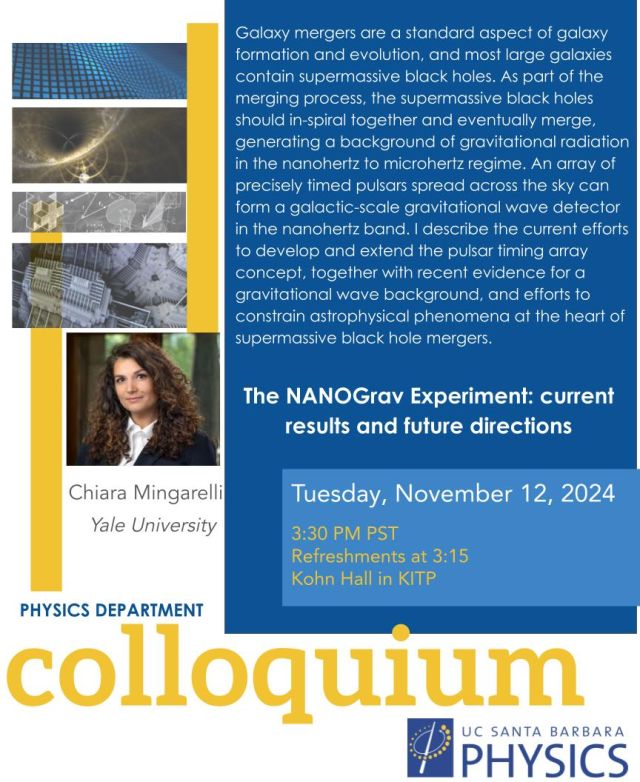The NANOGrav Experiment: current results and future directions

Chiara Mingarelli, Yale University
Title: The NANOGrav Experiment: current results and future directions
Abstract: Galaxy mergers are a standard aspect of galaxy formation and evolution, and most large galaxies contain supermassive black holes. As part of the merging process, the supermassive black holes should in-spiral together and eventually merge, generating a background of gravitational radiation in the nanohertz to microhertz regime. An array of precisely timed pulsars spread across the sky can form a galactic-scale gravitational wave detector in the nanohertz band. I describe the current efforts to develop and extend the pulsar timing array concept, together with recent evidence for a gravitational wave background, and efforts to constrain astrophysical phenomena at the heart of supermassive black hole mergers.